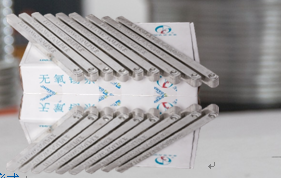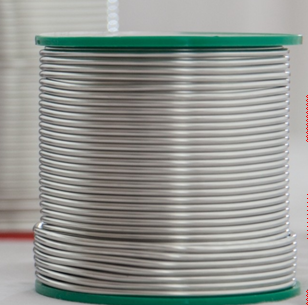Manual soldering and rework is a process step that requires outstanding operator technology and good tools; an inexperienced operator can create a nightmare of reliability. When equipped with sufficient tools and training, the operator should be able to create reliable solder joints. Surface mount hand soldering is sometimes more challenging than through-hole soldering because of the smaller pin pitch and higher pin count. Care must be taken in the rework process to not overheat the printed circuit board; otherwise the plated through holes and pads are susceptible to damage. This article will review contact welding and heated gas welding, the two most common hand soldering. Contact welding
Contact soldering is done when the heated tip (TIp) or collar is in direct contact with the solder joint. The tip or ring is mounted on the bonding tool. The welding Nozzle is used to heat a single weld and the weld ring is used to heat multiple welds simultaneously. There are a variety of design structures for single-nozzle welding tools and welding nozzles. There are also a variety of design structures for the soldering iron in the form of a soldering iron. There are two or four discrete rings, mainly for component removal. The design of the ring is mainly used for multi-leg components such as integrated circuits ((IC); however, they can also be used to remove rectangular and cylindrical components. The iron ring is very useful for removing components that have been glued together. After that, the iron ring can twist the component and break the glue connection.
Four-sided components, such as plastic pin chip carriers (PLCC), create a problem because it is difficult for the soldering iron to contact all pins at the same time. If the soldering iron does not touch all the pins, heat conduction does not occur, which means that some solder joints do not melt. Especially on J-type pin components, all pins may not be on the same reference plane, which makes it impossible for the soldering iron ring to touch all the pins at the same time. This can be catastrophic because the pads that are also soldered to the pins are pulled out of the PCB when the operator removes the components.
Welding nozzles and rings require frequent preventive maintenance. They need to be cleaned and sometimes tinned. It may be required to change frequently, especially when using a small soldering iron tip. Contact welding system
Contact welding systems can be categorized from low prices to high prices, often limiting or controlling temperature. The choice depends on the application. For example, surface mount applications typically require less heat than through-hole applications.
A constant temperature system that provides a continuous, constant output that continuously transfers heat. For surface mount applications, these systems should operate over a temperature range of 335 to 365 °C. The temperature limiting system has the ability to help maintain the temperature of the system in an optimal range of temperature limits. These systems do not continuously transfer heat, which prevents overheating, but heating recovery may be slow. This may cause the operator to set a higher temperature than desired and speed up the welding. The operating temperature range for surface mount applications is 285~315°C. Controls the temperature system and provides high output capability. These systems, like temperature limiting systems, transmit heat discontinuously. Response timing and temperature control are superior to temperature limiting systems. The operating temperature range for surface mount applications is 285~315°C. These systems also provide better biasing capabilities, typically 10 °C. Features associated with contact welding systems include, in most cases, contact welding is the easiest and least expensive method of touch-up and component removal and replacement. The glue-attached component can be easily removed with a weld ring. Contact welding equipment is relatively inexpensive and easy to buy. Problems associated with contact welding systems include: The system that does not limit the tip or ring is susceptible to temperature shocks, raising the temperature of the tip or ring above the desired range. The soldering iron ring must be in direct contact with the solder joints and pins to achieve efficiency. Temperature shocks can damage ceramic components, especially multilayer capacitors. Heating gas (hot air) welding
Hot air welding is accomplished by using a nozzle to direct heated air or an inert gas, such as nitrogen, to the solder joints and pins. Hot air equipment options range from simple hand-held units heating a single location to complex automated unit designs to heat multiple locations. Handheld systems remove and replace rectangular, cylindrical and other small components. The automated system removes and replaces complex components such as dense feet and area alignment elements.
The hot air system avoids the local thermal stresses that can occur with contact welding systems, making it the first choice for applications where uniform heating is critical. The hot air temperature range is generally 300 to 400 °C. The time required to melt the solder depends on the amount of hot air. Larger components may require more than 60 seconds of heating before they can be removed or replaced.
The nozzle design is important; the nozzle must point hot air at the weld and sometimes avoid the component body. Nozzles can be complicated and expensive. Adequate preventive maintenance is necessary; nozzles must be cleaned regularly and properly stored to prevent damage. Features associated with hot air systems include: Inefficiency of hot air as a heat transfer medium, reducing thermal shock due to slow heating rates. This is an advantage for certain components, such as ceramic capacitors. The use of hot air as a heat transfer medium eliminates the need for direct soldering iron contact. Temperature and heating rates are controllable, repeatable, and predictable. Hot air system related issues include: Hot air welding equipment prices range from medium to high. Automated systems are quite complex and require high levels of technical operation. Flux and solder flux can be dispensed in vials using a sealed or refillable flux pen. Often, operators use too much flux. I prefer to use flux pens because they limit the amount of flux used. I would also like to use a solder with a flux core that contains flux and solder alloy. When using solder and liquid flux with flux core, ensure that the flux is compatible with each other.
Surface mount soldering typically requires smaller diameter tin wires, typically in the 0.50 to 0.75 mm range. Through-hole soldering typically requires larger diameter tin wires ranging from 1.20 to 1.50 mm. Solder paste can also be dropped with a syringe, although many manual soldering methods heat the solder paste too quickly, causing tin and solder balls. Flux adhesives, rather than solder pastes, are very useful for arranging components in replacement areas.
Solder Wire/bar is an indispensable material for the manufacture of electronic products .Tin wire,TIn bar and tin paste are the most widely used electronic welding materials,the technical level depends on the performance of solder joints and welding process performance.
Product specification: Ñ„12*330mm
295*20*13mm
Product Features:
Smooth surface,neat coiling,beautiful appearance,uniform distribution of additives,good continuity.
Less splash of additives in welding process,good mobility,good wettability,less smoke,less oxide slag,bright welding spots.
Widely used in a variety of wave slidering and manual welding of television,audio capacitors,circuit boadrds and communications equipment.
Including SnCu.SnAg.SnAgCu,SnAgCuSb.SnAgBi series.


Solder Bar,Solder Wire Bar,Silver Solder Bar,Lead-Free Tin Solder Bar
Shaoxing Tianlong Tin Materials Co.,Ltd. , https://www.tianlongspray.com